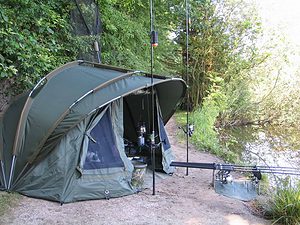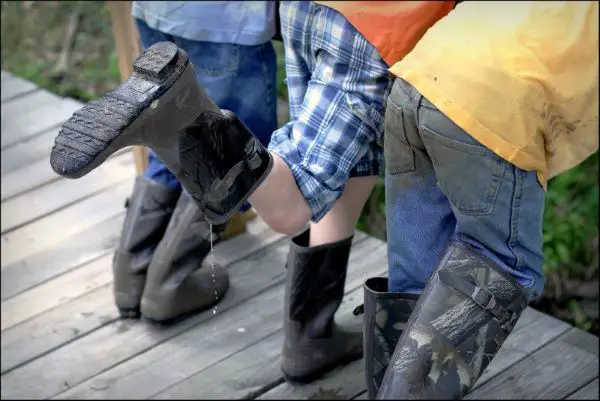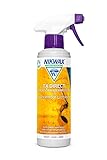Disclosure: Some posts contain affiliate links, which earn us a commission if you make a purchase through them. Positive Fishing © participates in various affiliate networks including the Amazon Services LLC Associates Program.
- Fishing tackle can be expensive to replace
- Learn how and when to clean your tackle correctly
- Learn how to maintain your tackle correctly to make it last longer
After a long fishing session, the last thing we want to do when we get home is to start cleaning fishing tackle!
But reels, rods, nets, etc., will be dirty with bait and fish slime. In addition, it’s more than likely going to be wet.
Fishing tackle is expensive and needs to be taken care of and maintained for it to last. Having dirty, damaged, or moldy tackle is one of the worst things to see the next time we get to the water.
Ensuring your gear is fit for fishing is the best way to get top performance every time you go fishing.
What Tools And Materials Are Needed To Clean Fishing Tackle?
Following are the tools and materials you will require to effectively clean your tackle to make each fishing trip pleasant and trouble-free.
- Mild soap
- Soft Cloths
- Small bucket
- Soft toothbrush
- Absorbent drying towel
- Hose pipe
What Tools And Materials Are Needed To Maintain Your Fishing Tackle?
- Lubricating Oil for the rod and reel
- Small screwdrivers for the reel
- Pair of tweezers
- A box of toothpicks
- Some unique cleaners for bivvies and umbrellas
When Do You Need To Clean Your Fishing Tackle?

To keep your fishing tackle in good working condition, you should always clean it as soon as you return home from your trip. Your boots and nets should be washed clean with water to remove any mud and potential diseases like the Koi herpes virus. Whilst this is good practice for all types of fishing, it is extremely important that all saltwater gear is always cleaned after every trip to prevent it from rusting.
How To Clean Your Fishing Rod?
Fishing rods are the most integral part of the fishing tackle and hence require extreme care. The rod handle always gets the dirtiest and must be wiped down every trip to avoid damaging it.
To keep the rod in good condition for the next trip, you should quickly inspect it for any damages after returning from fishing. If you have used your rod in saltwater, then it requires far more attention than a freshwater rod.
Following are the tips for cleaning your rod properly:
- Wash properly in water and soap, ensuring not to damage the rod guides.
- Take particular care around the handle and the reel seat clamps and holder.
- If there is any bait of dirt on any parts of the rod, gently brush with a soft toothbrush.
- Wipe the rod with a damp cloth to remove excess water and soap.
- Finally, dry with an absorbent towel.
- Leave the rod in the sun for a few minutes if possible to ensure it is dry
How to Maintain Your Fishing Rod?
Following are the tips for maintaining your rod properly:
- Always check all the rod guides for damage or rust.
- The rod “eyes” are particularly prone to damage; the top guide is most likely to have scratches, dents, and misalignment.
- The handle needs to be inspected for any nicks or damages. If your rod has a cork handle, this needs to be kept clean and dry of any dirt. Plastic handles are easy to maintain and need a quick inspection for damage.
- Inspect the rod blank for any chips or deep scratches.
Tip: To check the alignment of the guides, join the rod sections together and align the sections. By using your eyesight, you should see a clear straight view all the way along the rod.
Rod Repairs
If you find some damage to the handle, guides, or rod blanks, it is best to get them repaired at a professional shop. They have the tools and equipment to ensure it’s a perfect repair and will continue to be used for many more years. There are many available in every country, city, and town.
How To Clean Your Fishing Reel?
To make your reels last longer than usual, keeping them clean is extremely important. They are more tedious than rods and take more time due to the many smaller moving parts. All moisture is important to remove, as this can give rise to rust and reduce the efficiency of the reel.
Following are the tips for cleaning your reel properly:
- Remove the spool, handle, and easily detachable parts from the reel.
- Use warm water and soap to wash the reel after fishing. Using a small sponge and toothbrush gently will remove any small amounts of dirt.
- If there are any small dirt areas, then use a toothpick to remove these stubborn areas.
- Rinse or dip the reel in clean water.
- Clean the spool in water, careful not to damage the underside parts.
- Use a dry cloth to wipe any excess water and soap.
- Leave to dry in the sun.
How To Maintain Your Fishing Reel?
Maintenance of a reel includes proper treatment and regular oiling to make it work smoothly and efficiently. Proper oiling prevents your bearings and the moving parts from damage and wear.
Following are the tips for maintaining your reel properly:
- Make sure to keep all the parts of the reel you remove in a safe place; also, ensure that you only take the parts off that are designed to be cleaned.
- It’s not necessary to remove everything from the reel.
- Once the spool is removed, most of the parts that require oil are visible
- Check the handle and the mechanism carefully; oil only where necessary
- Do not over-lubricate; a couple of drops of oil is sufficient.
- Once the lubrication is complete, wipe down any excess and clean with a dry clean, soft cloth.
You can use most types of light gear oils; I personally use 3-in-one multi-purpose drip oil, which can be controlled whilst dropping the oil into small areas.
Tip: If you have doubts, make sure you refer to the reel manual when doing any maintenance. Buy the correct lubricants as recommended by the manufacturer.
Reel Repair Tips
If you are unlucky enough that your reel is damaged, I recommend sending it back to the manufacturer for repair. Most repair shops do not stock all the parts and will probably send your reel to the manufacturer.
How To Clean Your Carp Bivvy and Fishing Umbrellas?
Carp bivvies and umbrellas take the forefront of the weather elements such as rain and wind. Both require checking for tears or holes, and the waterproof coating must be replenished regularly.
First, erect the bivvy or a fishing umbrella and sponge it with warm water only! Do not use soap or detergents; these will degrade the protective waterproofing. Make sure the sponge is soft, and never scrub the material.
After completing this, hose down the bivvy or umbrella, ensuring that it is fully dried before storing.
If the surface is stained or marked, the best way to clean these areas is Fabsil unisex’s tent and gear cleaner. It acts as a “primer” before applying the waterproofing, and I use and highly recommend this great product.
Bivvies are very expensive and will need reproofing at least every 6 months. The best is Nikwax, Tx. Direct spray-on, it’s so easy to use!
Some waterproofing liquids or sprays need the surface to be warmed to prime the coating; check the product description and follow the instructions carefully.
Tip: Never use a high-pressure water sprayer when you rinse off any dirt or soap from any tackle
How To Clean Saltwater Fishing Tackle?
All saltwater tackle must have extra care over any other tackle. The salt from the ocean will do untold damage very quickly to anything it comes into contact with.
The spray from the sea and air will get into any crevice, so once you get home from the trip, wash down your rods with a soap solution and ensure you clean the rod guides and the handle areas thoroughly.
Reels are going to suffer the most. They must be dismantled, soaked in warm, soapy water for 30 minutes, and then cleaned and dried completely. Make sure that all sand and small particles are completely removed. Generally, soaking for 30 minutes is best to ensure no sand or salt is left on the reel.
Once the rod and reel are cleaned, you can complete maintenance like the freshwater tackle. Make sure the reels are lubricated well.
If you have any other tackle, such as rod holders or other metal accessories, ensure these are cleaned the same way as the rod and reels.
Tip: Once the tackle is cleaned, ensure everything is super dry before putting the tackle away.
How To Clean And Maintain Fishing Nets and Accessories?

- Fishing Keepnets and Landing Nets require a good spray with a garden hose. Once all the fish slime and other dirt are removed, lay them out fully or put them over the washing line to dry in the hot sun.
- Wellington Boots and Waders – With a soap solution, stiff brush, and water, clean off all mud and dirt from the sides of the boots. Make sure particular attention is made to the treaded soles.
- Knives, forceps, and pliers – should be cleaned off with a cloth and lightly oiled to prevent corrosion.
- Cleaning most other accessories is common sense.
Tip: Boots and fishing gear can be a prime culprit in the spread of KHV, make sure that all your fishing gear is kept clean; in particular, your nets and boots should be cleaned after every fishing trip.
Final Thoughts
Fishing rod cleaning and maintenance is quite simple and not such a chore once you regularly do it. Obviously, these extra few minutes will make your gear last longer and perform better, saving you money in the long run.
Lastly, I can guarantee that well-maintained fishing gear will get more bites and leads to less frustration!
- Length & Weight Variations In Salmon Species - February 29, 2024
- What Are Fish Scales & Slime: Exploring Their Crucial Roles In Fish - January 22, 2024
- Tench Fishing: Tactics & Tips For Landing The Elusive Tinca Tinca - January 18, 2024


